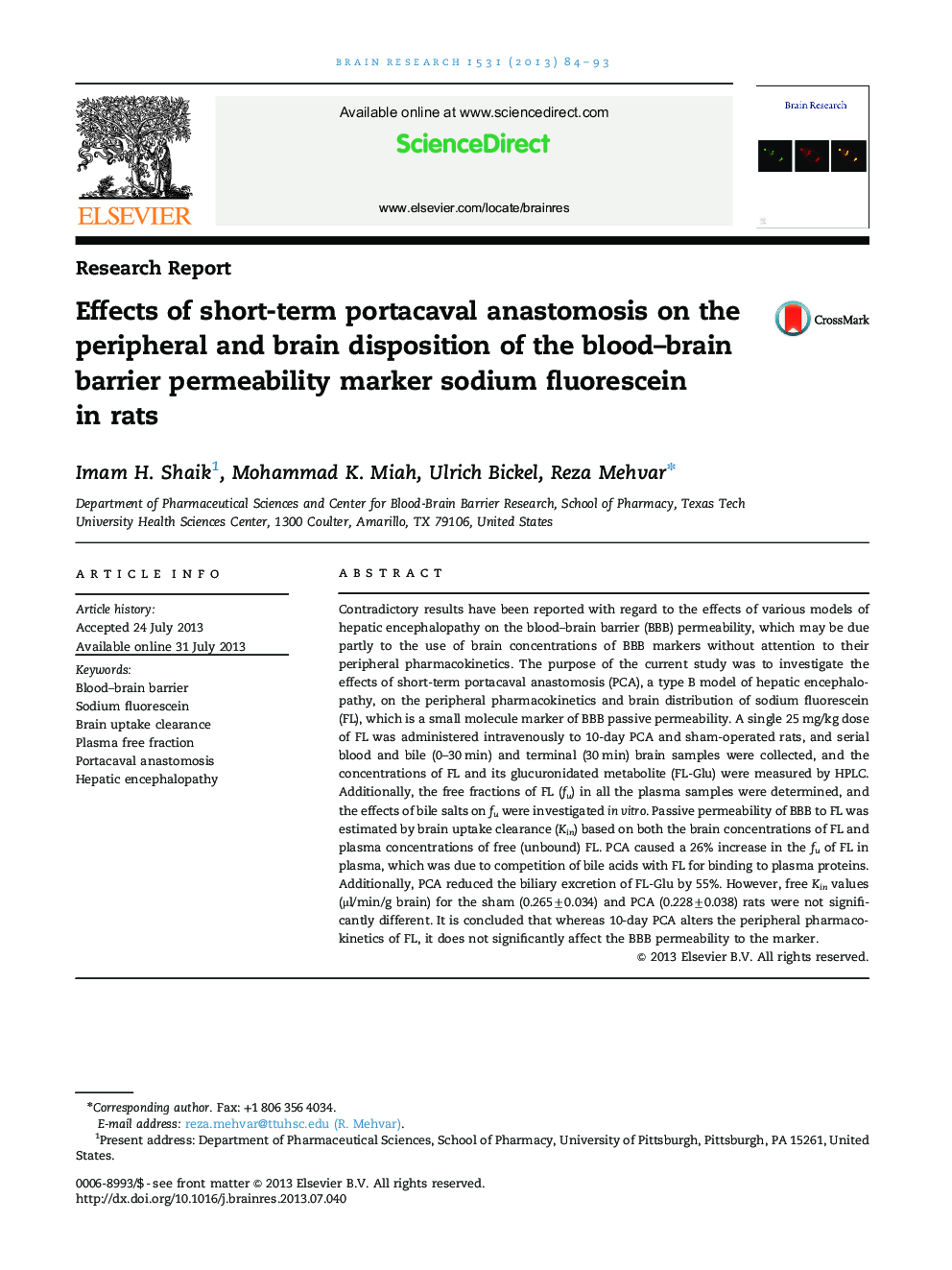| Article ID | Journal | Published Year | Pages | File Type |
|---|---|---|---|---|
| 6263714 | Brain Research | 2013 | 10 Pages |
â¢PCA significantly increased plasma concentrations of ammonia and total bile acids.â¢PCA significantly increased the plasma free fraction of fluorescein.â¢PCA significantly decreased the biliary excretion of fluorescein glucuronide.â¢The brain uptake clearance of fluorescein was similar to that reported for sucrose.â¢PCA did not alter blood-brain barrier permeability to fluorescein.
Contradictory results have been reported with regard to the effects of various models of hepatic encephalopathy on the blood-brain barrier (BBB) permeability, which may be due partly to the use of brain concentrations of BBB markers without attention to their peripheral pharmacokinetics. The purpose of the current study was to investigate the effects of short-term portacaval anastomosis (PCA), a type B model of hepatic encephalopathy, on the peripheral pharmacokinetics and brain distribution of sodium fluorescein (FL), which is a small molecule marker of BBB passive permeability. A single 25 mg/kg dose of FL was administered intravenously to 10-day PCA and sham-operated rats, and serial blood and bile (0-30 min) and terminal (30 min) brain samples were collected, and the concentrations of FL and its glucuronidated metabolite (FL-Glu) were measured by HPLC. Additionally, the free fractions of FL (fu) in all the plasma samples were determined, and the effects of bile salts on fu were investigated in vitro. Passive permeability of BBB to FL was estimated by brain uptake clearance (Kin) based on both the brain concentrations of FL and plasma concentrations of free (unbound) FL. PCA caused a 26% increase in the fu of FL in plasma, which was due to competition of bile acids with FL for binding to plasma proteins. Additionally, PCA reduced the biliary excretion of FL-Glu by 55%. However, free Kin values (µl/min/g brain) for the sham (0.265±0.034) and PCA (0.228±0.038) rats were not significantly different. It is concluded that whereas 10-day PCA alters the peripheral pharmacokinetics of FL, it does not significantly affect the BBB permeability to the marker.
